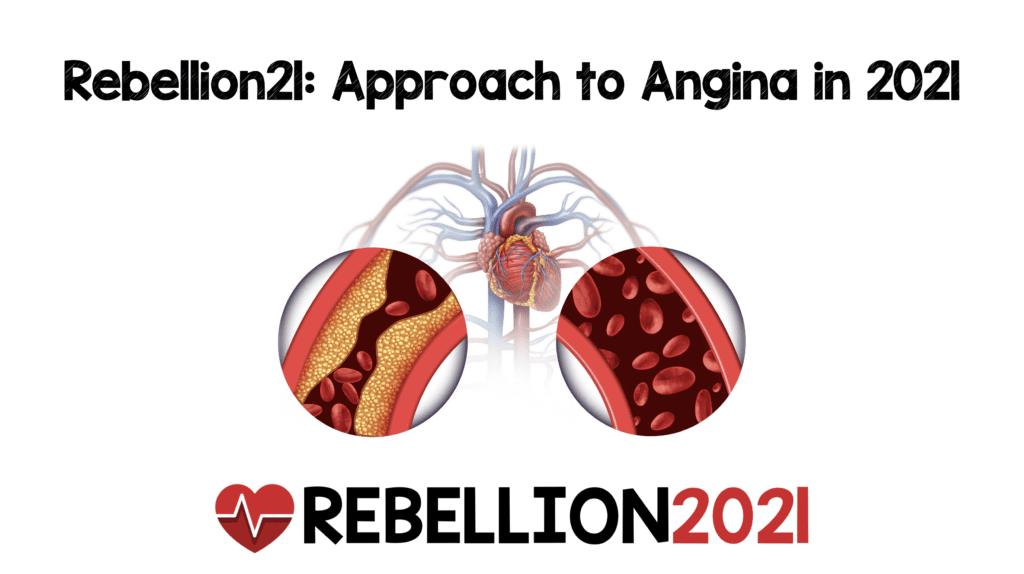

Tarlan Hedayati, MD
Emergency Medicine
Cook County Health
Twitter: @HedayatiMD
Objectives
- Examine the diagnostic modalities in the management of angina
- Review the evidence surrounding OMT vs invasive management of severe stable angina
Approach to Angina in 2021
- CTCA is an anatomic study that tells us about the presence and extent of CAD
- SCOT-HEART Trial 2015 (PMID: 25788230)
- Standard Care vs Standard Care + CTCA
- CTCA better at identifying CAD BUT increased downstream testing
- CTCA helped improve medication optimization (changed management) BUT no difference in CAD death or MI (patient-oriented outcomes at 6 weeks
- SCOT-HEART Trial 2018 (PMID: 30145934)
- 5 year follow up from 2015 study
- CTCA increased certainty in CAD diagnosis which improved medical optimization and made a small decrease in CAD death/MI BUT no difference in rates of angiography, PCI, or CABG at 5 years
- CTCA in the ED
- Reserved for low to moderate risk patients
- Increases resource utilization
- Causes longer ED stays
- Diagnosis of CAD in the ED doesn’t seem to improve subsequent MI or cardiac mortality at 6 weeks
- Not a functional test
- Only Benefit of CTCA: Good to help identify and quantify coronary atherosclerotic disease which can help with outpatient medication and lifestyle optimization
- COURAGE Trial 2007 (PMID: 17387127)
- Optimal Medical Treatment vs Optimal Medical Treatment + PCI in Stable Angina
- No difference in mortality, MI, or other major adverse cardiovascular events during a 2.5 to 7 year follow up period
- ORBITA Trial 2015 (PMID: 29103656)
- 200 patients with optimal medical treatment x6 weeks and randomized to PCI vs sham procedure in patients with symptomatic angina
- Exercise time in PCI group improved by 28 seconds and in sham group improved by 12 seconds (Difference of 16 seconds)
- Coronary artery disease isn’t just about large epicardial vessels. Microvascular coronary artery disease is just as important, and no amount of stenting will fix this issue
- Bottom Line:
- CTCA can help identify coronary anatomy, which can help optimize medical management but doesn’t change long term patient-oriented outcomes compared to optimal medical treatment alone
- PCI doesn’t improve death, MI or symptomatology in all comers with stable angina
- SCOT-HEART Trial 2015 (PMID: 25788230)
Post Peer Reviewed By: Salim R. Rezaie, MD (Twitter: @srrezaie)
Cite this article as: Salim Rezaie, "Rebellion21: Approach to Angina in 2021 via Tarlan Hedayati, MD", REBEL EM blog, September 19, 2021. Available at: https://rebelem.com/rebellion21-approach-to-angina-in-2021-via-tarlan-hedayati-md/.



